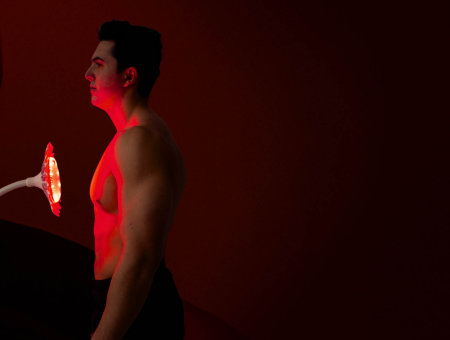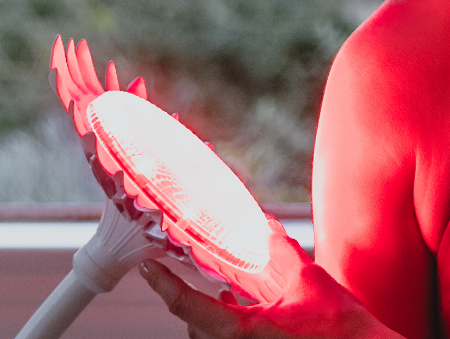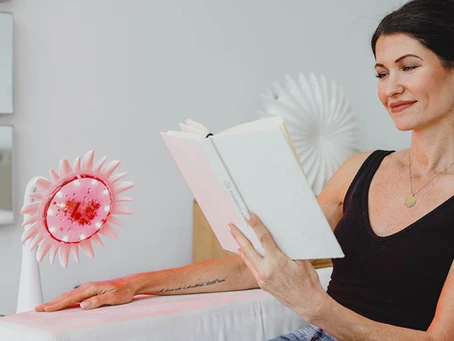Photobiomodulation (PBM), also known as low-level laser therapy or Red Light Therapy, is a fascinating medical and therapeutic technique that involves the application of low-level lasers or light-emitting diodes (LEDs) to stimulate cellular function and promote healing. While it might sound like a futuristic concept, the roots of photobiomodulation date back several decades.
In this blog post, we’ll take you on a journey through the history of photobiomodulation and explore its evolution into a valuable tool in modern healthcare.
The Early Beginnings of PBM (Photobiomodulation)
The story of photobiomodulation begins in 1896 when Niels Finsen cured Smallpox using light. He continued to demonstrate groundbreaking healing effects of phototherapy, proving that light therapy could be used to cure Smallpox, Lupus Vulgaris, and hundreds of other “diseases of civilization.”
His work rattled the medical world, rightfully earning him the Nobel Prize in Medicine in 1903 for “opening a new avenue of medical science”. Tragically, Finsen died shortly after winning the Nobel Prize and his crucial discovery of light as a medicine fell into darkness. In the last few years of his life, Finsen was committed to making light therapy accessible to every human being, not just for curing diseases, but also as a requirement for daily health.
A few decades later, in 1967, a Hungarian physician, Endre Mester, made an accidental discovery. Mester was conducting experiments to test the potential effects of laser radiation on tumor growth in mice. However, he noticed that instead of affecting the tumors, low-level laser exposure seemed to promote faster wound healing and hair regrowth in the mice.
In the 1980’s, The National Aeronautics and Space Administration (NASA) began experimenting with light-emitting diodes (LEDs) to grow plants in space. To the delight of the astronauts, they found that plants readily grew with the energy from these small “artificial suns,” even in space.
But what was even more remarkable was the effects LEDs had upon the astronauts themselves. They reported astonishing improvements to a number of health challenges that commonly plague humans in a zero-gravity environment: LED exposure improved bone mass, slowed muscular atrophy, and helped wounds to heal.
The Advent of Low-Level Laser Therapy
Following Mester’s pioneering work, researchers around the world began to explore the potential therapeutic applications of low-level laser therapy. By the 1970s, clinical trials and experiments on animals and humans confirmed its efficacy in accelerating tissue repair, reducing pain, and decreasing inflammation.
In the 1980s, the term “low-level laser therapy” (LLLT) was coined to describe this non-invasive medical procedure. During this period, LLLT started gaining recognition and was used in various medical fields, including dermatology, dentistry, and sports medicine. The technology was also adopted in the treatment of musculoskeletal injuries and chronic pain conditions.
Understanding the Mechanisms of Red Light Therapy
As the use of LLLT expanded, researchers delved deeper into understanding its mechanisms of action. They found that when low-level laser light is applied to cells and tissues, it triggers a series of biological responses at the cellular level. This includes the release of adenosine triphosphate (ATP), which is essential for cellular energy production, as well as the modulation of reactive oxygen species (ROS) and nitric oxide (NO), which play crucial roles in cellular signaling and regulation.
These cellular responses led to the development of more targeted and effective PBM devices, with specific wavelengths and parameters tailored to different applications and conditions.
Wider Clinical Applications
By the turn of the 21st century, photobiomodulation had firmly established itself as a valuable tool in healthcare. Its applications have expanded to include pain management, wound healing, neurological conditions, and even cosmetic treatments. Athletes, in particular, began to use PBM to speed up recovery from injuries and enhance performance.
In recent years, PBM has shown promise in addressing a range of conditions, including arthritis, traumatic brain injuries, and even mental health disorders like depression and anxiety. Research is ongoing, and the potential benefits of photobiomodulation continue to expand.
Modern Developments
Today, PBM technology has evolved significantly. Portable PBM devices are available for home use, allowing individuals to treat minor injuries and manage chronic conditions. Clinical settings employ advanced PBM systems that provide precise control over parameters, ensuring optimal results. Researchers are also exploring the combination of PBM with other therapies, such as stem cell therapy and pharmaceuticals, to enhance treatment outcomes further.
The history of photobiomodulation is a testament to the power of serendipity in scientific discovery. What began as an accidental finding by Endre Mester in the 1960s has evolved into a well-established and versatile therapeutic approach with applications across various medical disciplines. As research continues to uncover the intricacies of PBM’s mechanisms and its potential benefits, it holds the promise of revolutionizing healthcare and improving the lives of countless individuals around the world.
Whether in the hands of healthcare professionals or the homes of individuals seeking relief, photobiomodulation’s journey is far from over.




